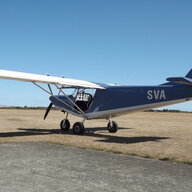I believe Rotax went away from the VDO unit as they are prone to failure: I have seen several replaced, and I don't get around that much.
Pressure transducers or transmitters with 4-20mA output are a long standing industrial standard.
Part of the benefit is that they return an accurate value regardless of how long the connecting wire is, which Voltage outputs don't (4mA anywhere in the loop will be 4mA, but 5v out there can be a lot less back here due to resistance of the wiring. However, that will not be a factor in light aircraft installations. I believe Rotax went looking for a more reliable replacement, and these industrial standards proved to be it.)
They come in a number of standard ranges, one of which is 0 to 10bar. I don't think I've ever come across 0.75 to 10.75bar. That surprises me a bit and I don't understand why they would be 'nonstandard': typical ranges would be 0-10, 0-15, 0-25 etc, always round numbers.
My Heavy Maintenance manual states 0 to 10bar and mentions either replacing the pump cover or recutting for a M10 x 1 thread (!) if upgrading sensor type. However this section of my manual may not be the latest version.
There will be lots of 0-10bar sensors out there, but it will be a bit of a punt as to which will prove reliable in the Rotax environment of temperature, vibration and possibly pulsing pressure from the pump. If going that way, I would definitely be inclined to stick with the Rotax recommended unit.
That or go with what you've got and reconfigure the EIS.


